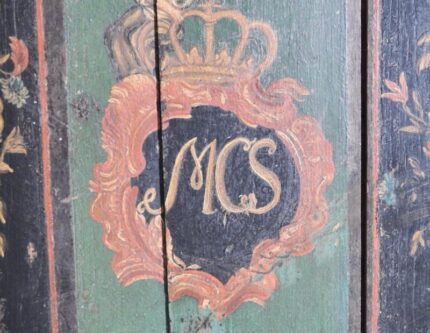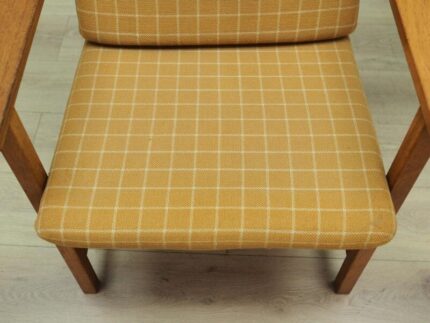He was among others an American fashion critic, television/radio personality, and fashion designer. We can imagine that this drawing was a study for a dress paying homage to the myth and quintessence of the beauty found within peacock feathers. Like any artist, there is a story, structure, composition, and arrangement of the woman and the peacock, creating an iridescent visual of blue, green, and yellow, a dialogue between forms, curves, and lines.
It is said that the Eye on the bird’s feathers reminds us that God is always watching. The off-white background is sober, crossed by two simple circular colored shapes, in the lower part. The two subjects initially appear as one entity, but as we move into the scene, we see that the woman is holding the peacock under her arm as one might hold an accessory. Then very quickly, it appears as the main figure, taking over the entire narrative rather than an accessory or a secondary figure. The peacock’s regal posture, with its unfurled feathers, contrasts with the woman’s near imbalance, almost as if she was fainting. It could also be interpreted as an intimate and seductive dance, where the two subjects come together as one to pay homage to a poetic and metaphorical world where aesthetics, fashion, and onirism converge. Did you know that peacocks use their train to attract attention? Peacocks are famous for having the largest and most spectacular feathers of any bird. Females, or peahens, have a more modest appearance. In contrast to the peahen, which is represented by the female figure in this lithograph wearing a more discreet patterned dress, the peacock raises its feathers upwards to attract her and spreads them out to form a giant fan. It then shakes them to produce a rustling sound. At this point, the female chooses the peacock with the most beautiful presentation, who becomes the father of her eggs. Mr. Blackwell thus delivers us a wonderful metaphor for the story of creation, the union between inspiration and the one who embodies its essence. Historically, the peacock symbolized immortality in late antiquity and the Middle Ages, adding a layer of depth to this composition.
Bio
Richard Blackwell, known as Mr. Blackwell was a fashion critic, designer, journalist, and TV/radio personality. He was most widely known for his “10 Best/Worst Dressed List”. In the 1960’s when he started his design career he was hired by American Weekly magazine for a one-time article on the Best/Worst dressed list he kept in publication for 47 years. It was syndicated and covered in various print, television, and radio outlets during that time. He did dress Yvonne DeCarlo, Jayne Mansfield, Dorothy Lamour, Jane Russell, and Nancy Reagan. He started designing in 1958 and the “House of Blackwell” lasted only until the early 80’s when fashion made a shift into a more common and casual way of dressing.
-
Dimensions:Height: 33 in (83.82 cm)Width: 27 in (68.58 cm)Depth: 0.88 in (2.24 cm)
-
Style:Art Nouveau(In the Style Of)
-
Materials and Techniques:Paper
-
Place of Origin:United States
-
Period:Mid-20th Century
-
Date of Manufacture:1950s
-
Condition:ExcellentWear consistent with age and use.
-
Seller Location:Pasadena, CA
-
Reference Number:Seller: LU825835329862




























Reviews
There are no reviews yet.